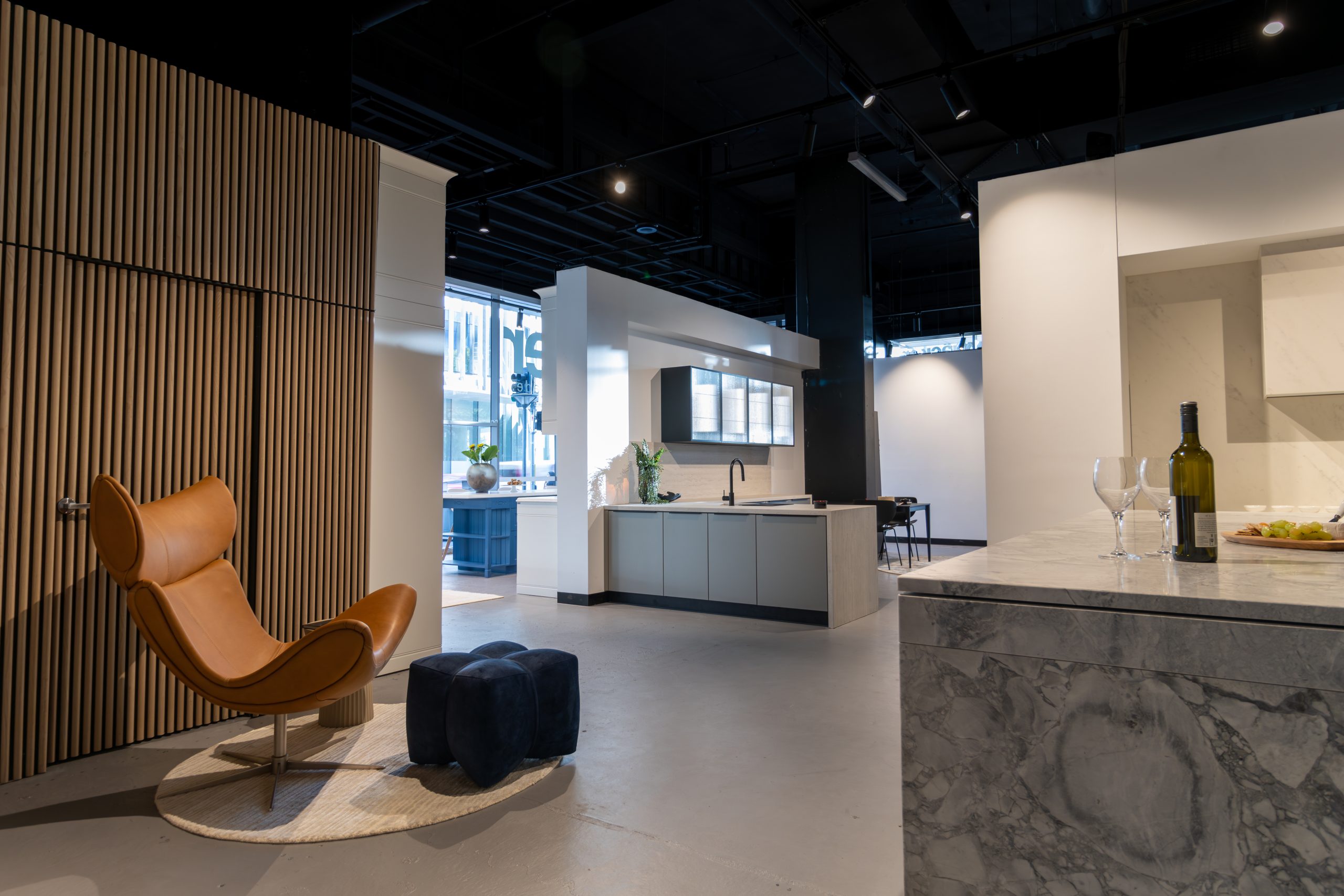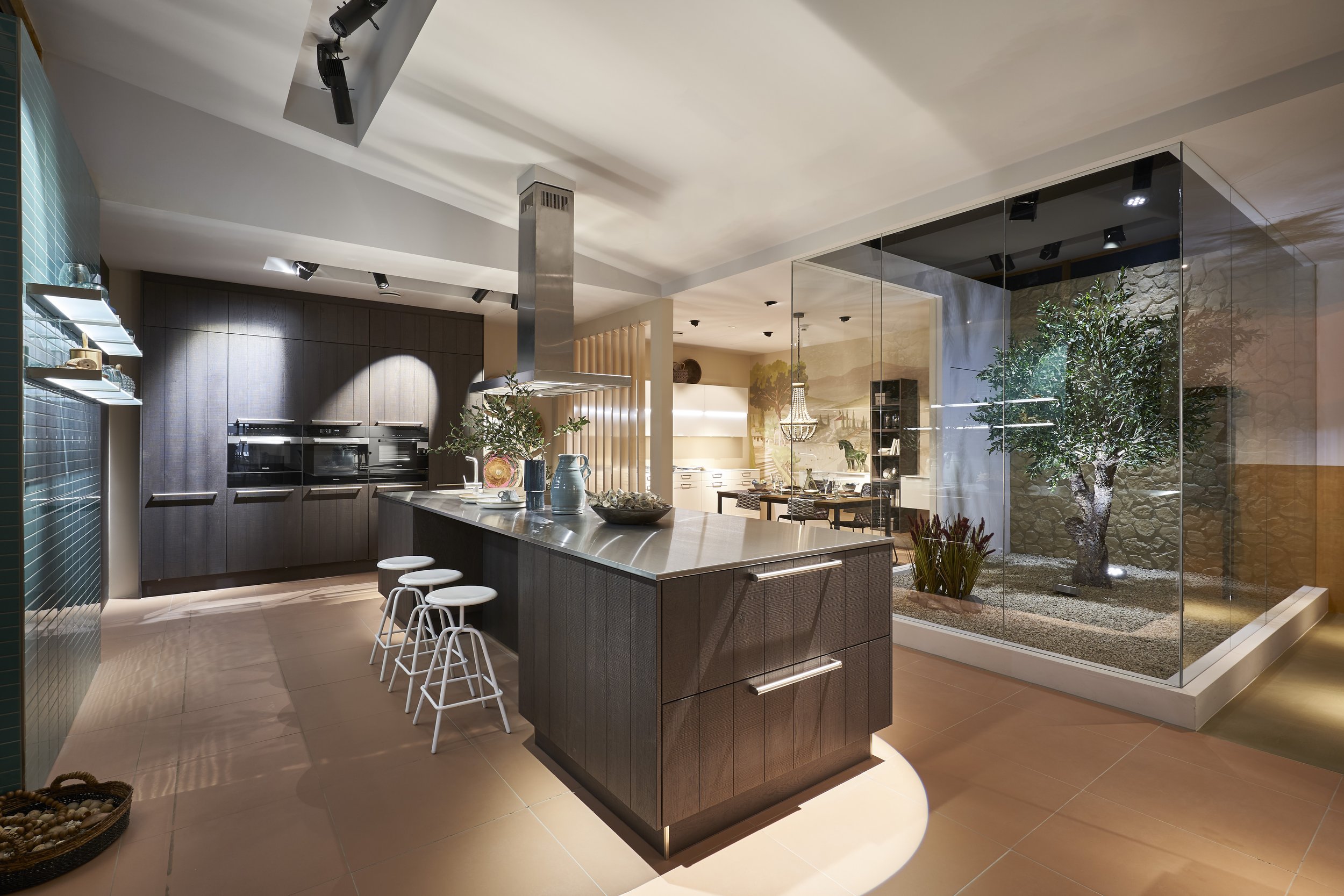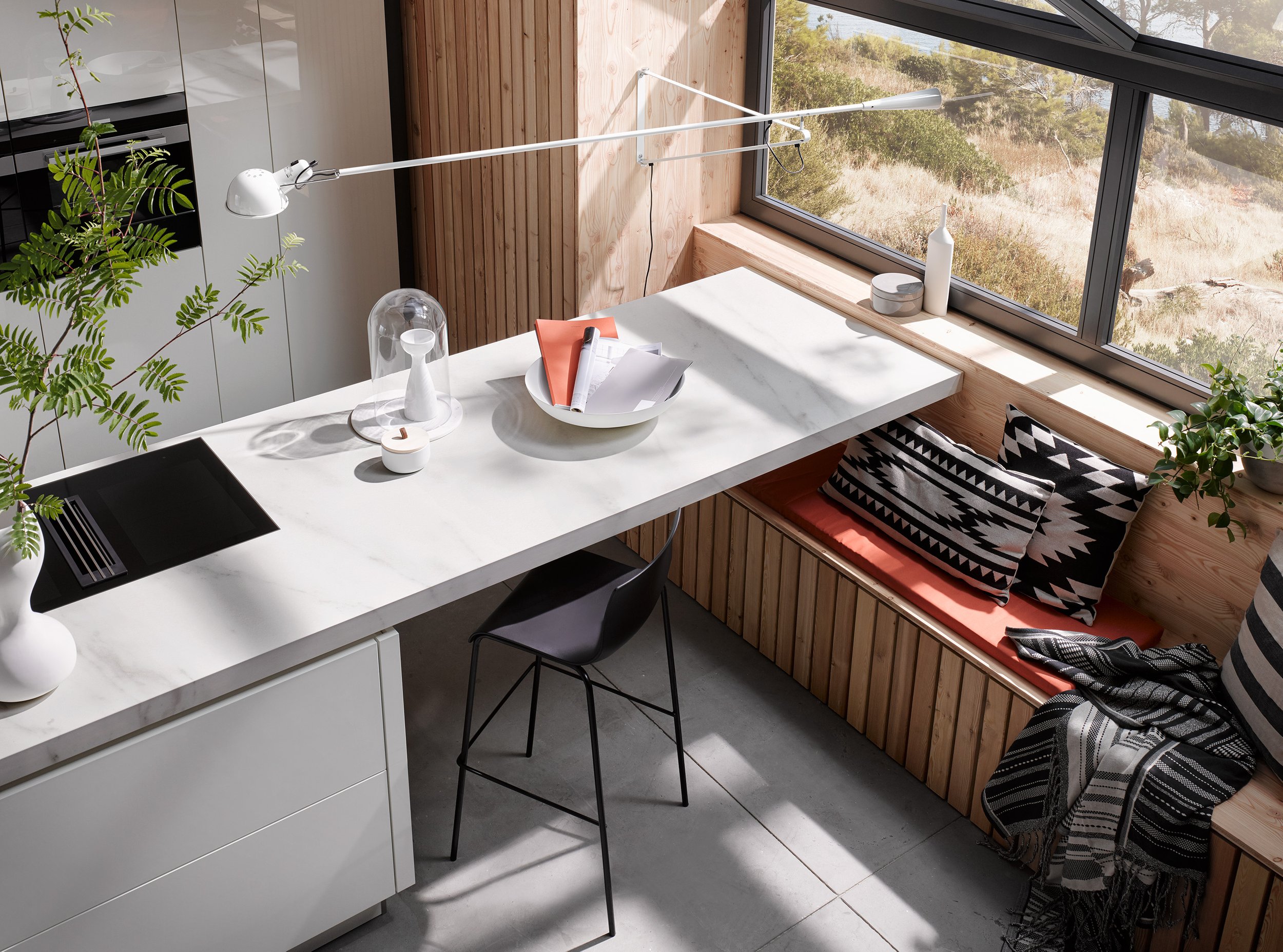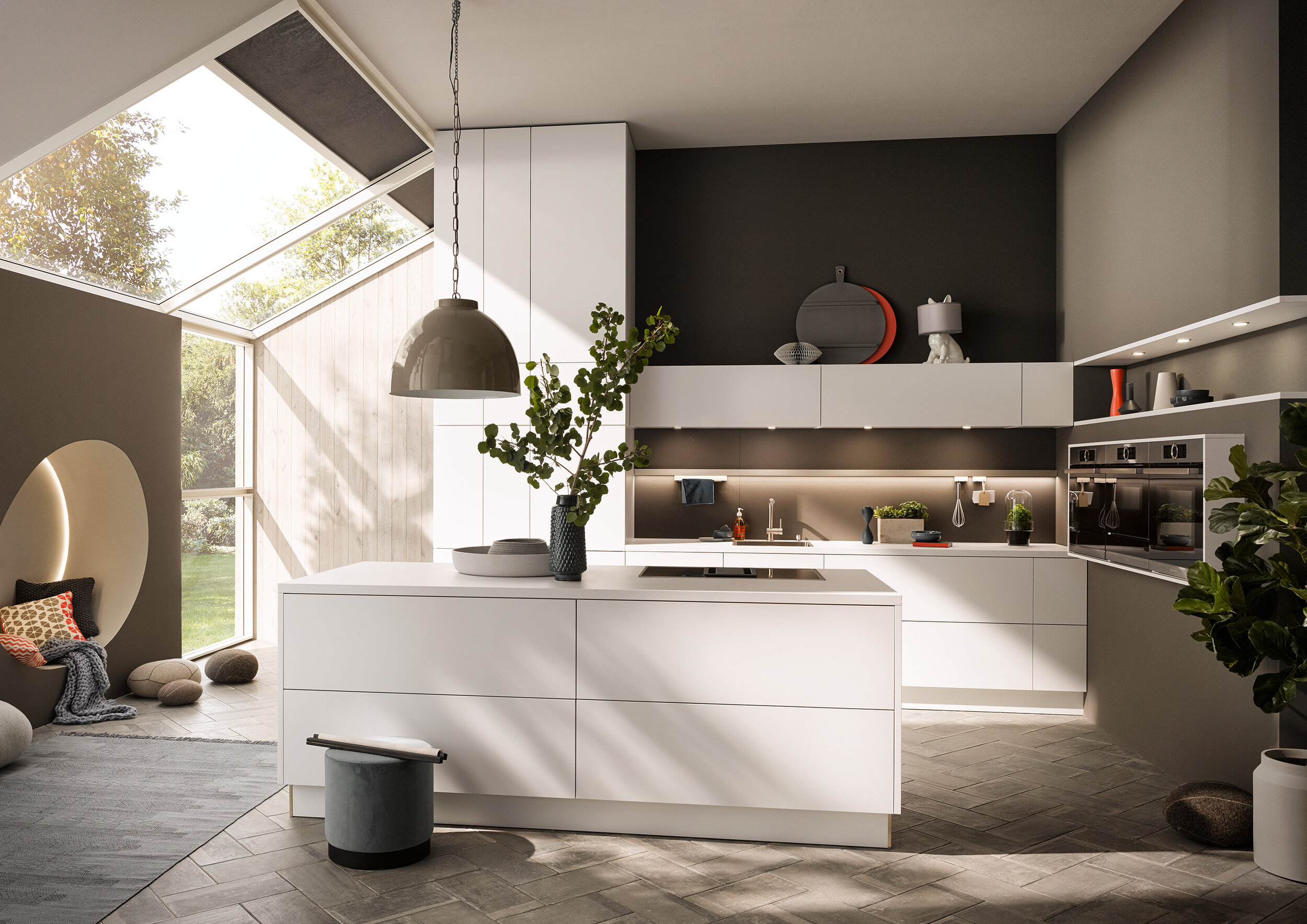
U-Shaped Kitchens: Design, Efficiency, and Modern Layouts
The U-shaped kitchen remains one of the most popular and efficient kitchen layouts in Australian homes, offering exceptional functionality and storage capacity. This design has been a favourite in Australian homes for decades, and for good reason. Let’s explore why U-shaped kitchens work so well and how to make yours absolutely perfect.
What Is a U-Shaped Kitchen? Understanding the U-Style Kitchen Layout
A U-shaped kitchen layout is exactly what it sounds like – your cabinets, benchtops, and appliances wrap around three walls, creating a “U” shape when you look down from above. It’s like having your kitchen give you a big hug!
The beauty of this design is how it creates an enclosed workspace where everything you need is within easy reach. Your sink might be on the back wall, cooktop on one side, and fridge on the other, creating what kitchen designers call the “work triangle.” It’s incredibly efficient for cooking.
Kitchen U-shape designs have evolved beautifully over the years. Modern versions can feel open and airy rather than boxed in, thanks to clever design tricks and better lighting. They work brilliantly whether you’re cooking for two or feeding a big family.
The best part? This layout naturally keeps your cooking activities separate from household traffic. No more people walking through your workspace while you’re trying to cook dinner!
U-Shaped Kitchen Layout Planning: Appliances and Cabinet Installation Tips
What is the ideal appliance configuration in a U-shaped kitchen?
Getting your appliances positioned right is crucial for a smooth-working kitchen. The golden rule is to create an efficient work triangle between your sink, cooktop, and fridge.
Try putting your sink on the centre wall – this usually gives you the best natural light and outside views while you’re washing up. Then position your cooktop and fridge on the side walls. This setup means you’re never taking more than a few steps between tasks.
In a U-shaped kitchen design, the enclosed layout is actually a blessing. You won’t have people wandering through your cooking space, which means safer and more relaxed meal preparation. Plus, everything stays contained and organised.
For small U-shaped kitchen layouts, be extra thoughtful about appliance sizes. A slightly smaller fridge or a compact dishwasher can make a huge difference in how the space feels and functions.
How to organise a U-shaped kitchen?
Storage is where U-shaped kitchens really shine! You’ve got three walls to work with, so you can create amazing storage solutions.
Make those corner spaces work hard with lazy Susan units or pull-out corner drawers. These were traditionally tricky spots, but modern hardware makes them super functional. No more losing things in the back of corner cupboards!
Think vertically, too. Floor-to-ceiling cabinets give you tonnes of storage without eating up floor space. Use the high shelves for things you don’t need every day, and keep everyday items at eye level.
The key is mixing different types of storage. Deep drawers for pots and pans, narrow pull-outs for spices, and maybe some open shelving to display your favourite dishes or cookbooks.
What are the common variations of U-shaped kitchens?
| Variation Type | Key Features | Suitable Space | Unique Benefits |
| Standard U-Shaped Kitchen | Three walls with full cabinetry and appliances | Medium to large kitchens | Maximise counter & storage space |
| U-Shaped with Island | Central island added to the U-shape | Larger kitchens | Extra prep/dining space, social hub |
| Small U-Shaped Kitchen | Compact dimensions with minimal cabinetry | Small apartments | Space-saving and functional design |
| U-Shaped with Peninsula | One extended countertop connects to cabinetry | Open plan kitchens | Imposes partial room division, adds seating |
Each style works for different homes and lifestyles. The standard version maximises storage and workspace. Adding an island creates a social hub perfect for families. The peninsula option works beautifully in open-plan homes where you want some separation without full walls.
How to Design a U-Shaped Kitchen
What are stylish design elements to enhance your U-shaped kitchen?
Light colours are your best friend in U-shaped kitchen design. Think soft whites, pale greys, or gentle pastels. These colours reflect light around the space and prevent it from feeling closed in.
Two-tone cabinets can look stunning, maybe darker base cabinets with lighter wall units. This creates visual interest while keeping the space feeling open and airy.
Lighting is absolutely crucial. Under-cabinet LED strips eliminate shadows on your benchtops, while pendant lights over an island or peninsula create beautiful focal points. Don’t forget about natural light, a window above the sink is classic for good reason!
Your splashback is a great place to add personality. Whether it’s classic subway tiles, a bold pattern, or natural stone, this is where you can inject some style without overwhelming the space.
What are the trending interior design inspirations for U-shaped kitchens?
Modern U-shaped kitchen trends focus on family-friendly functionality. Think designated zones for different activities, a coffee station, homework area, or meal prep zone.
Storage solutions are getting smarter, too. Soft-close drawers, full-extension slides, and adjustable shelving make everything more user-friendly. These might seem like small details, but they make daily life so much easier.
Contemporary U-shaped kitchen designs Australia often feature integrated appliances that create clean, seamless lines. Built-in ovens, hidden dishwashers, and panel-ready fridges all contribute to that sleek, uncluttered look.
Sustainable materials are increasingly popular. Recycled timber, low-VOC paints, and energy-efficient appliances appeal to environmentally conscious homeowners.
How to design a U-shaped kitchen for small spaces or apartments?
A small U-shaped kitchen design requires smart thinking, but the results can be amazing! Light colours are even more important here; they’ll make your space feel twice as big.
Compact appliances are your friend. A slightly smaller fridge, narrow dishwasher, or combination microwave-convection oven can free up valuable space without sacrificing functionality.
Vertical storage becomes crucial. Use every bit of wall height with tall cabinets, and don’t forget about the space above your fridge or oven.
Consider glass cabinet doors or open shelving to create visual lightness. This prevents the tiny U-shaped kitchen from feeling like a closed box.
What Are the Pros and Cons of U-Shaped Kitchens?
| Pros of U-Shaped Kitchens | Cons of U-Shaped Kitchens |
| Efficient Use of Space: Utilises three walls for maximum storage and counter space, ideal for medium to large kitchens. | Limited Floor Space: Can feel cramped, especially in small kitchens, causing discomfort and limited movement. |
| Better Workflow: Supports the kitchen work triangle, reducing unnecessary steps and improving cooking efficiency. | Closed-In Feeling: Enclosure by cabinetry on three sides may reduce openness, making the space feel boxed in. |
| Ample Storage & Counter Space: Plenty of cabinets and wraparound countertops enhance organisation and meal prep. | Corner Cabinet Issues: Difficult-to-access corners often require costly solutions like lazy Susans or pull-out shelves. |
| Separate Task Zones: Natural division of cooking, prepping, and cleaning areas, allowing simultaneous activities in harmony. | Traffic Flow Challenges: Narrow aisles or poor planning can cause congestion if multiple people work simultaneously. |
| Smooth Flow to Dining/Living Areas: Open-plan friendly, enabling social interaction and better lighting. | Less Flexibility: Fixed “U” shape limits the incorporation of large islands or open-plan adjustments compared to other layouts. |
| Maximising Natural Light: Window placement can brighten the workspace, creating a welcoming kitchen environment. | Potentially Higher Remodel Costs: More cabinetry and countertop surface mean increased expenses for materials and installation. |
The key is understanding your cooking style and family needs. If you love having everything within reach and don’t mind a more enclosed feeling, a U-shaped kitchen could be perfect.
FAQ
What is the clearance for a U-shaped kitchen?
You need at least 1.2 metres between opposing benchtops for comfortable movement. However, 1.4-1.5 metres feels much more spacious and allows cabinet doors to open without bumping into each other.
For smaller spaces, 1 metre is the absolute minimum, but it might feel tight during busy cooking times. Corner areas need about 900mm clearance from cabinet faces so doors and drawers can open properly.
Think about how you use your kitchen. If you often have multiple people cooking, go for the wider clearance. If it’s mainly one person, the smaller measurement might work fine.
Are U-shaped kitchens out of date?
Not at all! U-shaped kitchens are timeless because they’re so practical. Modern versions incorporate contemporary materials, sleek appliances, and smart storage solutions that keep them feeling fresh and current.
Today’s U-shaped kitchen designs embrace open-plan living while maintaining the layout’s efficiency benefits. Light colours, reflective surfaces, and clever lighting prevent any old-fashioned closed-in feeling.
The key is updating the style elements, modern handles, contemporary colours, and current appliances, while keeping the proven functional layout. Many kitchen designers still recommend U-shaped layouts for their unbeatable efficiency and storage capacity.
This layout adapts beautifully to current trends like integrated appliances, smart storage, and sustainable materials. It’s not going anywhere because it simply works so well for how families live and cook today.







